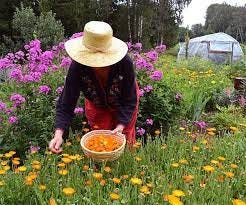
In a world where self-sufficiency and sustainability are becoming increasingly important, the self-sufficient backyard has emerged as a symbol of responsible living. It’s not just about growing your own food; it’s a lifestyle choice that promotes environmental consciousness, reduces waste, and fosters a sense of connection to nature. In this article, we’ll explore the concept of the self-sufficient backyard and offer practical tips to help you create your own sustainable oasis.
What is a Self-Sufficient Backyard?
A self-sufficient backyard is a space where you take control of your resources, aiming to reduce your reliance on external sources. It’s about producing your food, generating energy, and managing waste in an eco-friendly manner. This concept goes beyond traditional gardening and includes practices like rainwater harvesting, composting, and renewable energy production.
Key Components of a Self-Sufficient Backyard
- Food Production: Growing your fruits, vegetables, and herbs is at the heart of a self-sufficient backyard. Consider raised beds, container gardening, or even vertical gardening to maximize space. Don’t forget to use organic practices to reduce the need for harmful pesticides and fertilizers.
- Composting: Composting kitchen scraps and yard waste can significantly reduce your household waste and provide nutrient-rich soil for your garden. A simple composting bin can work wonders.
- Rainwater Harvesting: Collecting rainwater in barrels or cisterns can be a game-changer. Use this water for watering your plants, reducing your dependence on municipal water sources.
- Solar Panels: Harnessing solar energy with photovoltaic panels can power your home, reduce energy bills, and even allow you to sell excess electricity back to the grid in some regions.
- Chicken Coop: If local regulations allow, consider raising chickens. They can provide eggs and natural pest control while turning kitchen scraps into valuable compost.
- Beekeeping: Bees are vital for pollination and can provide you with honey, wax, and a deeper connection to your ecosystem.
- Native Plantings: Use native plants in your landscaping. They require less water and maintenance while supporting local wildlife.
Benefits of a Self-Sufficient Backyard
- Environmental Impact: By reducing your reliance on mass-produced food and fossil fuels, you lower your carbon footprint and minimize environmental harm.
- Cost Savings: Growing your own food and generating energy can lead to substantial long-term savings on groceries and utility bills.
- Healthier Lifestyle: Homegrown fruits and vegetables tend to be fresher and more nutritious, contributing to a healthier lifestyle.
- Resilience: A self-sufficient backyard can make you more resilient in times of crisis, such as food shortages or power outages.
- Connection to Nature: Spending time tending to your backyard fosters a deeper connection to nature and a greater appreciation for the environment.
Challenges and Considerations
Creating a self-sufficient backyard requires time, effort, and ongoing maintenance. It’s essential to research local regulations and consider factors like climate, space, and available resources. Start small and gradually expand your self-sufficiency efforts as you gain experience.
In conclusion, the self-sufficient backyard is not just a trend; it’s a sustainable way of life that benefits both you and the planet. By implementing the key components mentioned above, you can take meaningful steps towards reducing your environmental impact, saving money, and living a more connected and self-sufficient life in your own backyard.
